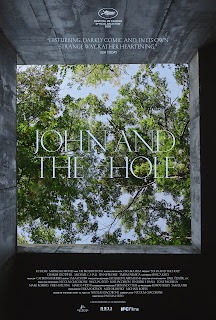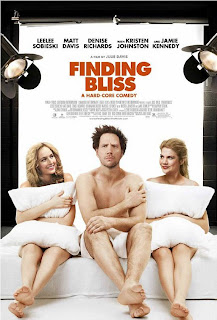"John and the Hole" detached and inscrutable but unsettling and always compelling
Someone needs to talk about John, too. For the sake of comparison, “John and the Hole” is a coming-of-age story if Kevin McCallister actually made his family disappear with a time-out. Pascual Sisto’s feature debut is not quite a “Bad Seed” thriller, but as an adaptation of writer Nicolás Giacobone’s short story “El Pozo,” it’s actually operating on a more allegorical level. While the subject of an apathetic and possibly disturbed teen makes it seem closest to Lynne Ramsay’s chilling, thoughtful “We Need to Talk About Kevin,” Sisto’s film is less about a budding sociopath than it is about one’s eagerness for adulthood. It’s so understated—maybe too understated at times—that it doesn’t quite get around to examining what it wants to with any consequence, small or big. Nonetheless, “John and the Hole” is austere but always compelling.
Charlie Shotwell (2020's "The Nest") is unsettling as John, an aloof 13-year-old who looks like an ordinary kid but has a lot of ideas floating inside that shaggy-haired head. He’s very inquisitive, asking bizarre questions that his parents even have trouble answering. He likes to hold his breath in the pool long enough to look like he’s drowning. He also likes to spike lemonade and drug his gardener. John’s life perks up when he’s playing with his drone in the woods and discovers a hole — it’s actually an incomplete bunker, but it will do. One night during their family dinner, John drugs his father (Michael C. Hall), mother (Jennifer Ehle) and older sister (Taissa Farmiga), and drags their passed-out bodies into the hole. If or until he lets them out, John can do whatever he wants, like play video games with his friend, drive his family car to take out cash from the ATM, order pizza, and not pick up after himself.
From a pacing and style perspective, Pascual Sisto’s film is deliberate, detached, and visually precise, not unlike the work of Michael Haneke and Yorgos Lanthimos. There’s a stillness to most of the film, complete with static long takes and slow zooms captured in a boxy aspect ratio, that one will either find lethargic or intoxicating. Sisto even showcases a dark, deadpan sense of humor like Lanthimos. For instance, when John tries imitating his father’s deeper voice to fire the gardener over the phone, he ends up having more success with pretending to be his mother. There’s also a simmering anxiety from start to finish, particularly when a friend of John’s mother pops by, but at a certain point, one does wonder if there’s an actual point. Besides observing John’s inexplicable behavior and his attempts at trying to live on his own, Sisto sees no need for diagnosing John when he can just force the viewer to fill in the empty holes.
Excellently performed by Michael C. Hall (Dexter Morgan himself), Jennifer Ehle, and Taissa Farmiga, the dynamic between John’s family in the hole is also fascinating to see unfold once they realize John has not been attacked but is the one behind their predicament. A narrative framework involving a pre-teen girl named Lily (Samantha LeBretton) and her mother (Georgia Lyman) gets introduced exactly 27 minutes into the film, only to make the present action appear to be a fable. This is an interesting (and abstract) juxtaposition, where Lily is forced to grow up quickly through abandonment versus the privileged John choosing to “grow up” without any adult supervision, but it’s so infrequently used that it only feels like a device, wedged-in and mostly disconnected. Even if that part of the film doesn’t quite come together as Sisto had hoped, “John and the Hole” still grabs you by the throat.
Grade: B -
IFC Films is releasing “John and the Hole” (104 min.) on VOD on August 6, 2021.










Comments
Post a Comment